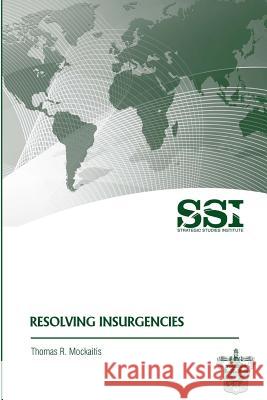Resolving Insurgencies » książka
Resolving Insurgencies
ISBN-13: 9781477627624 / Angielski / Miękka / 2012 / 104 str.
Counterinsurgency remains the most challenging form of conflict conventional forces face. Embroiled in the longest period of sustained operations in its history, the U.S. Army maintains a fragile peace in Iraq and faces a chronic insurgency in Afghanistan. In much of Africa, Asia, and Latin America, active insurgent conflicts continue and potential ones abound. The United States may become involved in some of these conflicts, either directly or by providing aid to threatened governments. Understanding how insurgencies may be brought to a successful conclusion is, therefore, vital to military strategists and policymakers. The author, Dr. Thomas Mockaitis, examines in great detail how past insurgencies have ended and how current ones may be resolved. Drawing upon a dozen cases over half a century, the author identifies four ways in which insurgencies have ended. Clearcut victories for either the government or the insurgents occurred during the era of decolonization, but they seldom happen today. Recent insurgencies have often degenerated into criminal organizations committed to making money rather than fighting a revolution, or into terrorist groups capable of nothing more than sporadic violence. In a few cases, the threatened government has resolved the conflict by co-opting the insurgents. After achieving a strategic stalemate and persuading the belligerents that they have nothing to gain from continued fighting, these governments have drawn the insurgents into the legitimate political process through reform and concessions. This monograph concludes that such a co-option strategy offers the best hope of success in Afghanistan and in future counterinsurgency campaigns.
Zawartość książki może nie spełniać oczekiwań – reklamacje nie obejmują treści, która mogła nie być redakcyjnie ani merytorycznie opracowana.











